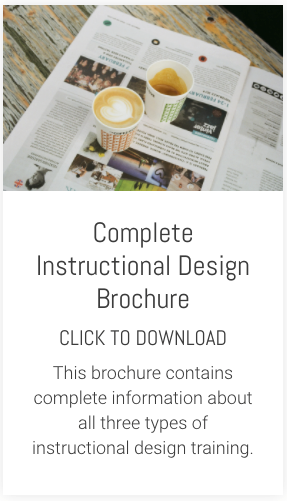Over recent years, the term 'project fear' is a term we've become familiar with. People first started to use the term in the run up to the EU referendum in 2016 and it has been re-used and re-hashed in various ways ever since.
So here’s a question that at first sight might seem a bit off the wall. Can anything about 'project fear' help us to design better learning? Crazy as it might seem, I believe so. Because 'project fear' should remind us of a very important aspect of learning and instructional design that’s too often overlooked. The emotional state of our learners.
'Project fear' works on a very simple premise: the more fearful of something you make people, the more likely they are to comply with your wishes. In the case of the EU referendum campaign, 'project fear' also leveraged peoples' general dislike of change. The scarier or more difficult you make change seem, the thinking went, the more likely people would be to resist it.
Of course, as the authors of that particular example of 'project fear' discovered, the danger is that you over-egg the pudding. The scariness you are promoting starts to look unbelievable and ends up having the exact opposite of the effect you hoped to achieve.
But the basic premise behind 'project fear' is accurate. In general, none of us much like change and depending on the nature of the change, we can be fearful of it. If that change seems like it involves more effort, more work or disruption to a comfortable routine, many people will resist.
And it’s this underlying response to change which is so important to us as instructional designers and trainers. Because in a work-based setting, training is often the conduit used to ask us or to persuade us to start doing things differently, to adjust our behaviour or to do things we have never done before.
If you are creating work-based learning, it is almost certain that you will be creating courses that are preparing learners for a significant change in their job role or its associated performance.
Because it involves change, your learners may well be less than thrilled about the prospect. In the days or weeks before taking your learning, any number of negative thoughts could have rushed through their heads about what lies ahead.
By the time they log-in to start the piece of e-learning you have created or walk through the training room door to attend a classroom course you have designed, it’s quite likely they will not be in a frame of mind to think positively about change.
If your learners are totally in the wrong frame of mind when they start your learning, it has some significant winning of hearts and minds to achieve before it can even start to increase or improve your learners knowledge and skills.










